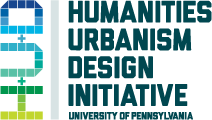News
Abstraction Unframed: Murals and Urban Space in the 1950s
What is the public fate of abstract art in the twentieth century? Can it engage with the urban environment and its inhabitants? This talk looks at various abstract painters, like Lee Krasner and Adolph Gottlieb, who executed large-scale, public mural projects in 1950s New York. Installed on facades and in lobbies, these murals marked the thresholds between various institutions—civic, religious, and corporate—and the public streetscape of a changing postwar city. Taking their place amidst the soaring surfaces and glass curtain walls of mid-century International Style architecture, such murals traded painterly texture for the flinty gleam of mosaic, and thick pigment for the permeable translucency of stained glass. In these and other ways, the murals transformed what had often been a private, subjective idiom into a form of publicity: a public language capable of broadcasting an institution’s character or status to passersby. The resulting murals, little known today, raise important questions about abstraction and communication, the relationship between architectural and painterly modernism, and art’s role in the postwar urban fabric.

